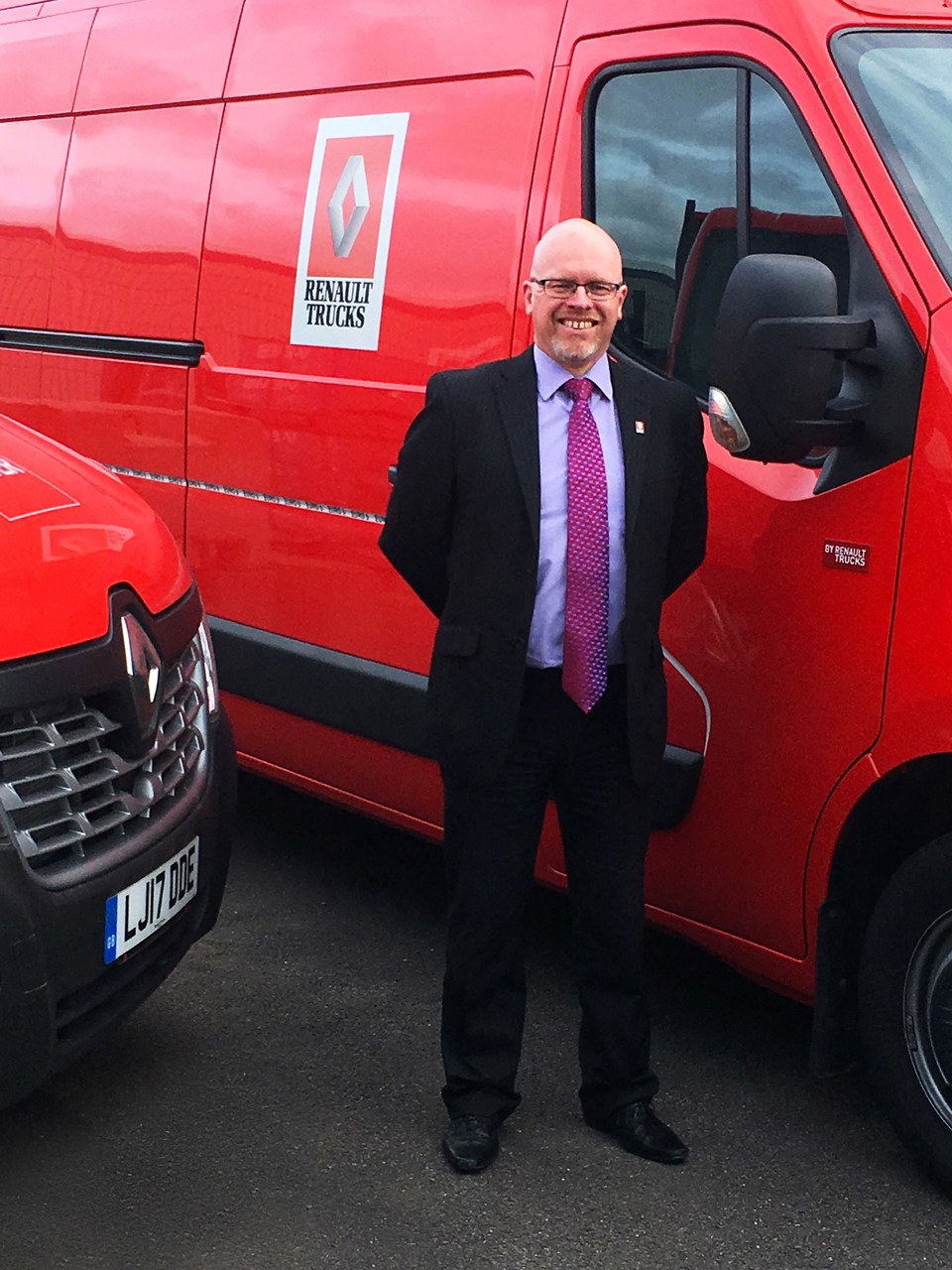Fleets requiring more carrying capacity than a 3.5-tonner can deliver need not feel obliged to go straight to 7.5 tonnes.
A growing number of manufacturers are offering halfway-house vans and chassis cabs that are cheaper to buy and operate and, in some cases, provide a more generous payload.
Citroën’s Relay and Peugeot’s Boxer are both available at four tonnes gross, Ford’s Transit goes up to 4.7 tonnes and you can order a five-tonne Mercedes-Benz Sprinter van.
Renault Trucks is the latest to join the party with an unusual front-wheel drive 2.3-litre 165PS diesel Master converted into a tri-axle six-tonne chassis cab by Dutch engineers Nefra Vehicle Technology. It is due on sale shortly.
“It’s aimed at logistics companies looking for something that’s more cost-effective than a 7.5-tonner,” said Renault Trucks light commercial vehicle manager Grahame Neagus (pictured).
“So far as fuel economy is concerned it will return 24mpg compared with the average 16-to-17mpg you get at 7.5 tonnes.”
A low rear loading height means there is no need to fit a tail-lift and incur both cost and payload penalties, according to Neagus. Climbing in and out of a low-slung cab all day for local delivery work is a lot less arduous than clambering in and out of a 7.5-tonner.
The UK model will be fitted with a 30cu m body built by PD Stevens of Market Drayton, Shropshire, and mounted on a Nefra chassis. Approximate payload capacity is 2.8-to-three tonnes.
Neagus dismisses concerns that a front-wheel-drive six-tonner may not be as capable of standing up to arduous work day after day as a rear-wheel-drive vehicle.
“There are more than 1,000 of these models in service in the Benelux countries and they’re doing fine,” he said.
Launching the Nefra Master is in line with Neagus’s plan to enter niche markets that car and van importer Renault UK may feel unable to tackle and to leverage the benefits of the extended workshop opening hours offered by the truck manufacturer’s dealers – something which car dealers that also sell vans cannot usually match.
“Something else we’re doing this year in quarter one is launching a 4x4 Master converted by Oberaigner and available at 3.5 and 4.5 tonnes,” he says. An electric Master ZE is in the pipeline, too, and should arrive in the third quarter.
Despite the fact that it markets Eurocargo at 7.5 tonnes, Iveco is promoting a lighter alternative in the shape of the Daily 7.2-tonne chassis cab. Although its gross weight is lower, it can offer a 250kg-to-300kg payload advantage rising to 500kg in some cases over traditionally-engineered European 7.5-tonners.
“You should get a 25% fuel saving as well and the front-end price is around £5,000 lower on average,” says Iveco light business line director, Emmet Wrafter.
The 5.1m-wheelbase 7.2-tonne Daily chassis cab which went on sale last January can accommodate a 38cu m curtainsider body.
Less tangible benefits include the fact that it looks and behaves more like a big van than a truck, Wrafter adds. Drivers who are more used to being at the wheel of a 3.5-tonner may find it easier to handle and more manoeuvrable as a consequence and its softer profile may be more acceptable to home owners if it is tasked with delivering around suburban housing estates.
“We’re seeing a trend in favour of 7.2 tonnes and it’s one we’re actively encouraging,” says Wrafter. “We believe it’s a growing sector of the market.”
Recent adopters include Connect Plus Services which helps to manage and maintain the M25 on behalf of Highways England. It has taken delivery of its first four Daily 7.2-tonners fitted with traffic management bodywork built by Strongs Plastic Products.
“The 7.2-tonner can easily carry all the equipment we need to cater for lane closures and urgent repairs and still has capacity to spare,” said Connect Plus operations and maintenance manager, Shaun Moseley.
ND Brown has added six to its hire fleet and has been equipping them with asphalt mixing machines for emergency road repairs.
Managing director Mark Fernyhough said: “The low chassis height makes pouring asphalt much easier.”
There are still arguments in favour of 7.5-tonners. Equipped for the most part with deeper and more robust chassis, they are better-suited to tipper work than a 7.2-tonner like the Daily, and probably more suitable as a platform for certain specialist types of conversion; sweeper conversions for example.
Nor does the Daily have it all its own way as far as payload is concerned. Fuso’s lightweight Canter 7.5-tonner runs it close.
The last word goes to Connect Plus’s Moseley. “Our crews are working on one of the busiest motorways in Europe so their safety is our absolutely priority,” he said. “The Daily’s compact size means we can park on the hard shoulder and still carry out important maintenance work; and at a safe distance from flowing traffic.”

















Login to comment
Comments
No comments have been made yet.